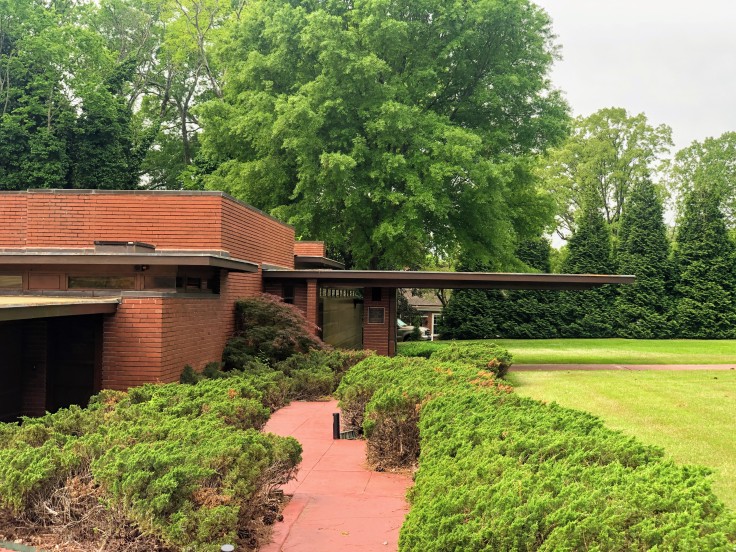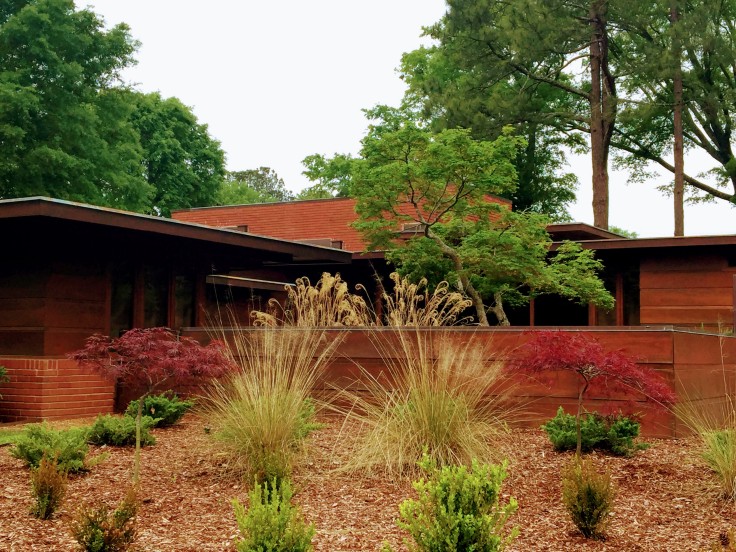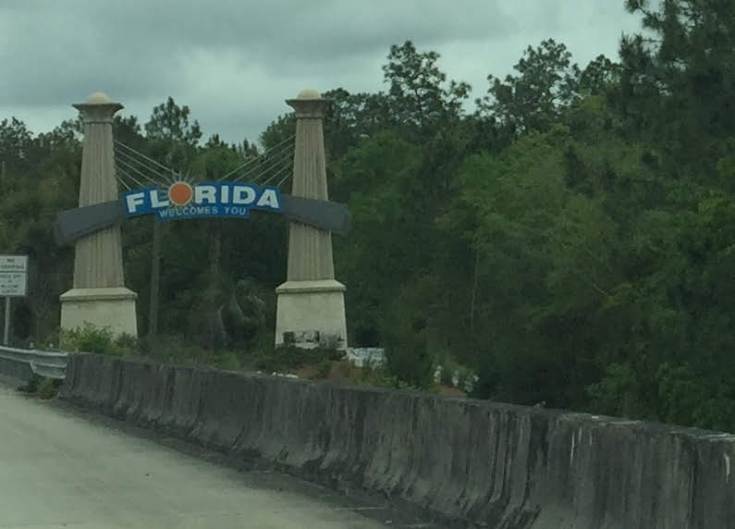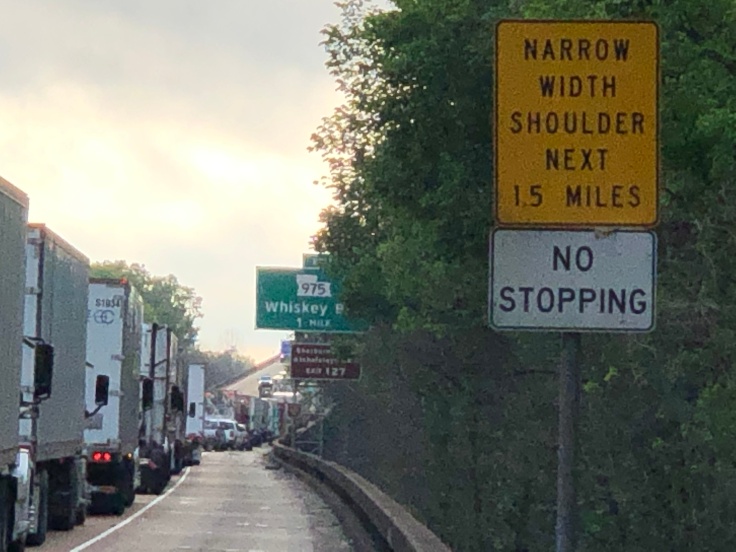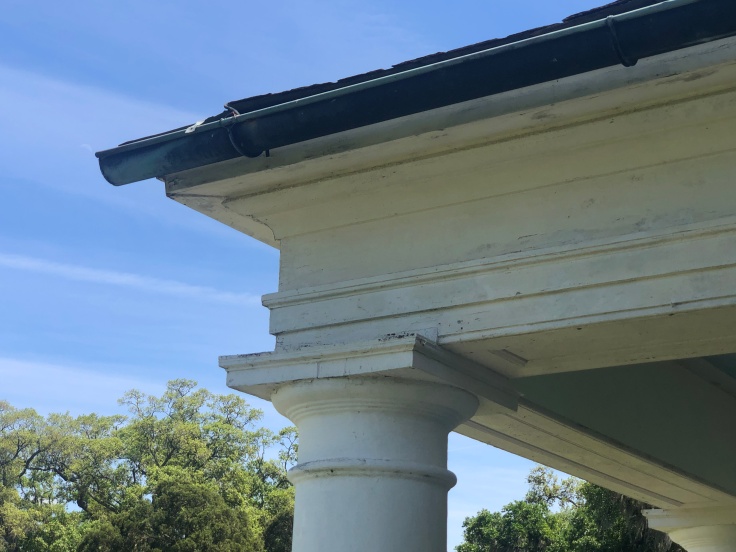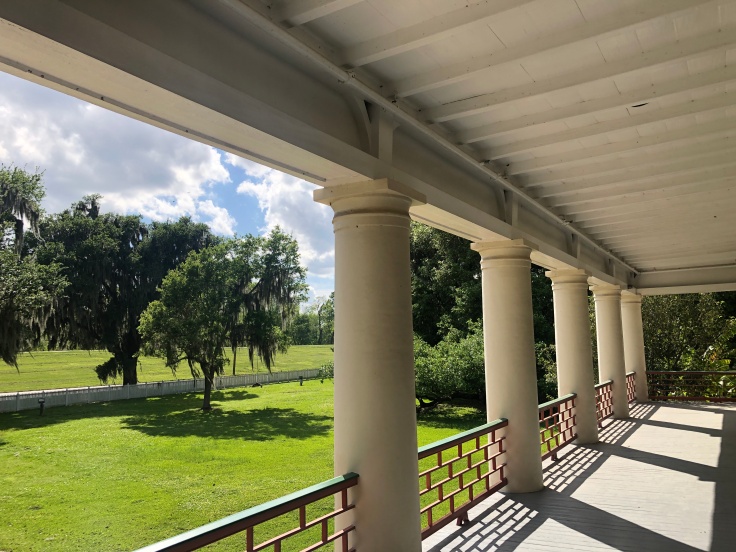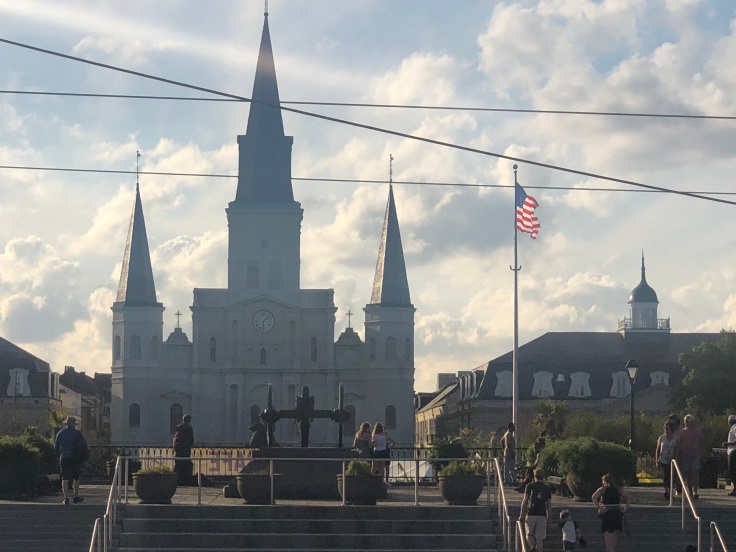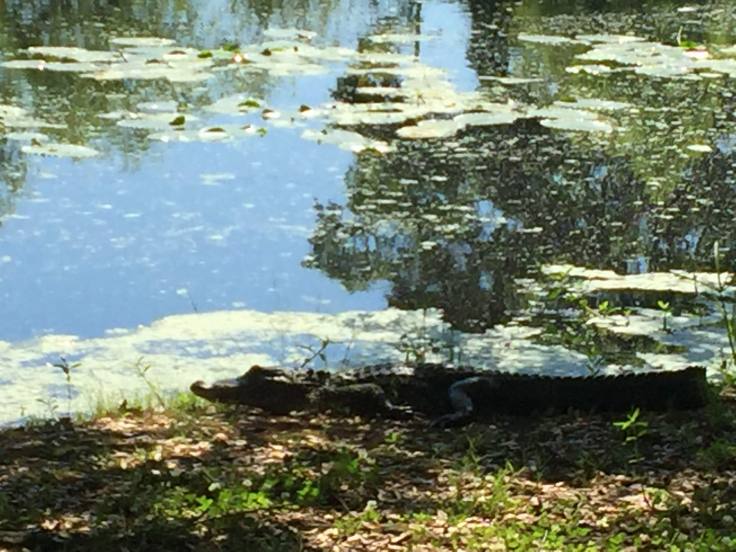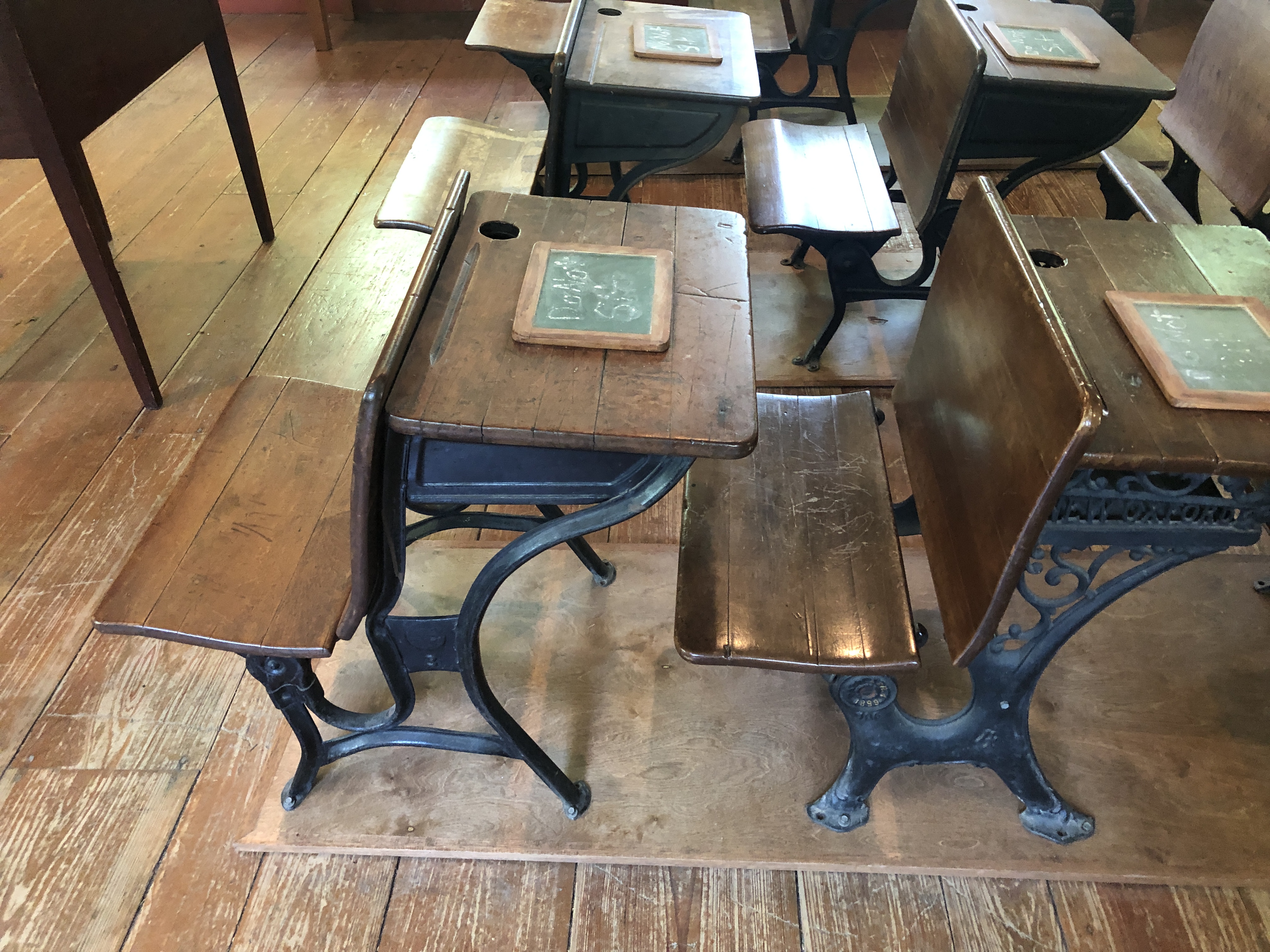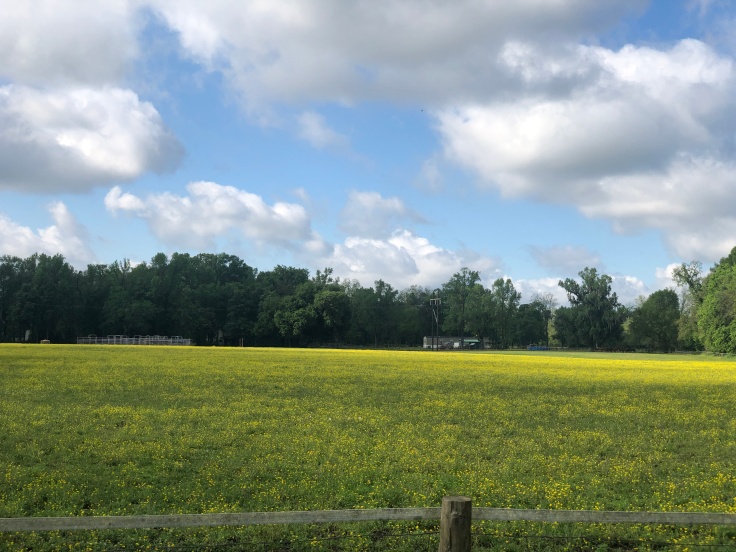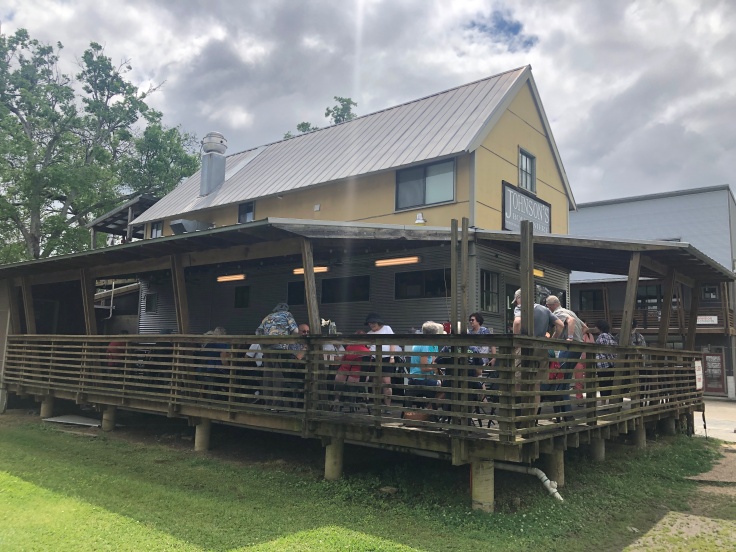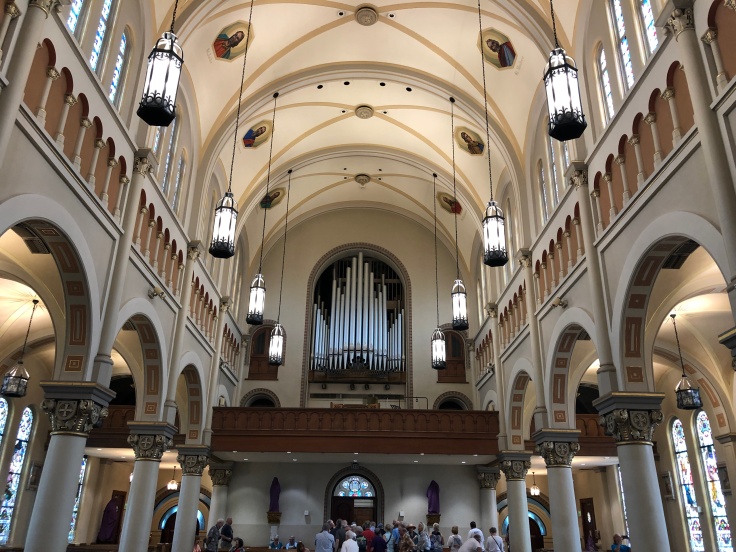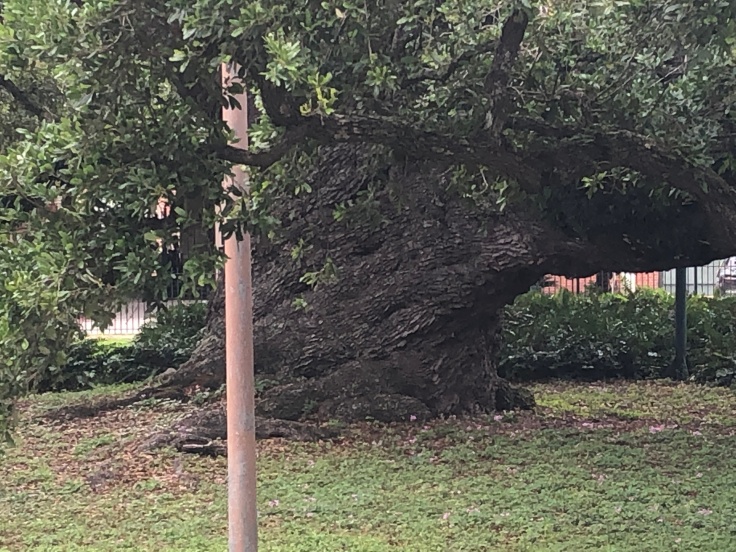We carpooled together this morning to Frankfort – the capital of Kentucky. I’m always surprised when I see a state capital that is such a small town. The population of Frankfort is only about 28,000… It is so small you could hardly see it because of the trees…



But before we could park at the capitol building we found: The Zeigler Residence!



It is not open to the public… Sad…
So we moved on to a perfect example of Beaux-Arts/Greek Revival Architecture…





Statue of Abe Lincoln…

The rotunda dome… LED lights subtly change colors…


EVERYTHING in this building follows the golden rule – what you do to one side you must do to the other. True in algebra and true in the symmetry of classical buildings…

The other president born in Kentucky – Jefferson Davis…
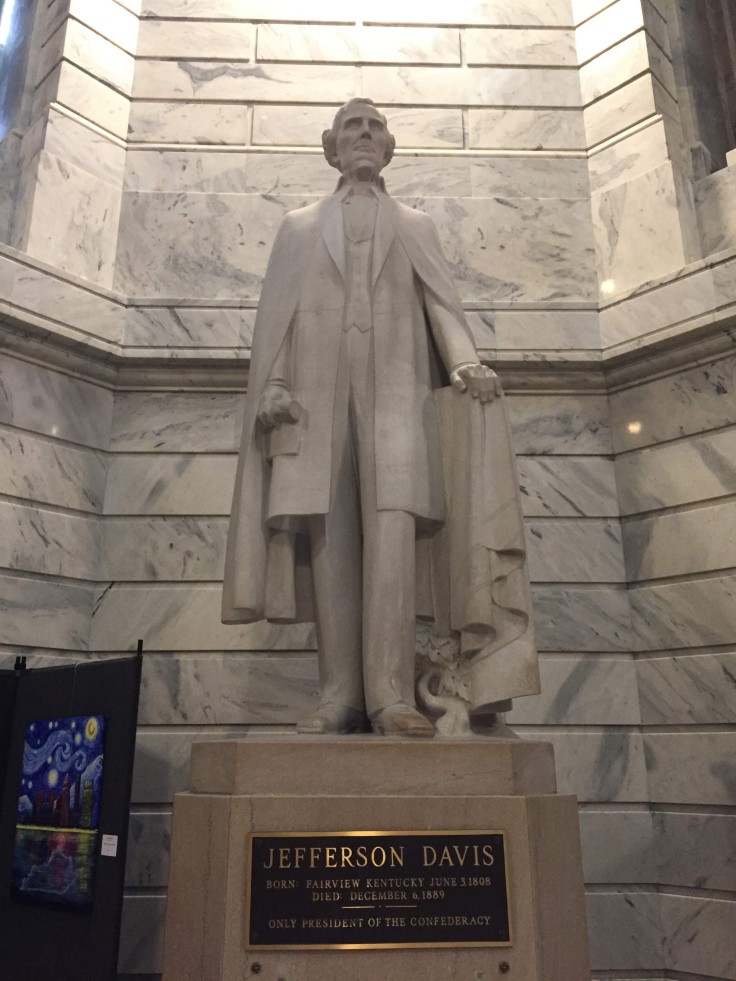
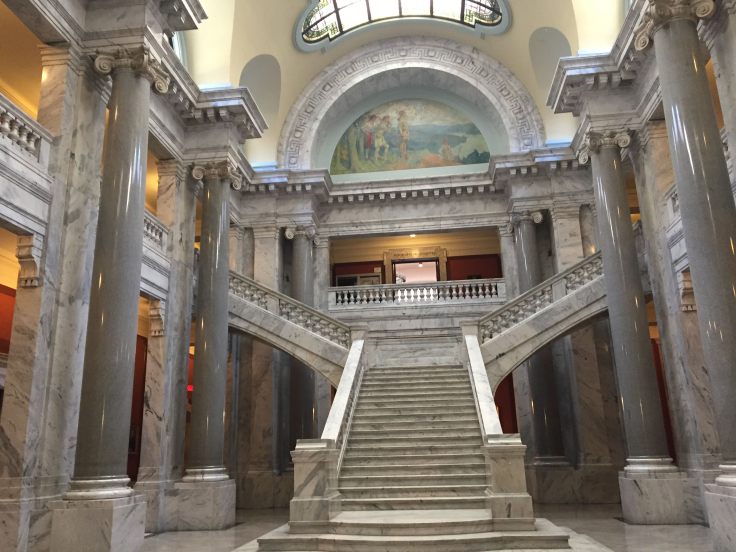

The State Supreme Court…

The legislative floor…



The Assembly Chamber…


The Senate chamber…

I’m not a fan of these neo-classical building. I do appreciate the attention to detail, beautifully executed by the stone masons…



What annoys me is when designers, who often do not know how materials and buildings go together, try to duplicate these details in a studs and stucco construction… Sorry – you can’t do these details in stucco!
All in all it was a nicely detailed building but a little over-scaled. It seemed too heavy for my taste, and the proportions seemed a little “off”…
We had a great tour, then we moved on to the Kentucky VietNam Veterans Memorial…

The design is unique in that it is a sundial with the names of the dead located on the granite floor such that the shadow of the point of the sundial falls on the name on the day of the year that he or she died…



It is a little confusing, but a moving memorial in any case…
Time for a break. We drove into downtown Frankfort; we walked the (small) town and enjoyed a nice lunch at Serafini…




During lunch we saw a commotion of people gathering just outside the restaurant and across the street, on the lawn of the “old” state capitol building…


Today was an all-state peace officers memorial ceremony for officers killed in the line of duty…



Bagpipes were playing…



It looked like a nice, small town parade and gathering of like-minded people. Very nice…
After lunch we walked around the town; we especially liked the buildings overhanging the Kentucky River…









We soon arrived at our next tour:

Rebecca Ruth was in business making candy for over 60 years; as a women this was unheard of… In Kentucky in the 19th and early 20th century women without a father or a husband simply didn’t exist – they could not own property, have a bank account, or do much of anything… She confounded all these ideas…



Rebecca Ruth is credited with inventing the famous bourbon balls, although the claim is disputed… There was a nice tour and many folks bought lots of chocolate…
But we were moving on to our final tour of the day: Buffalo Trace!
Buffalo Trace is one of my favorite “go to” daily drinking bourbons, along with Makers Mark. But I knew little about it; I was looking forward to this tour! Boy! Was I surprised!

The distillery is very old, and is listed on the National Listing of Historic Places…

Here is the buffalo… I’m not sure what they are trying to tell us about the water they use here…

We had the standard tour, seeing the barrel houses, the fermentation tanks, and the bottling line…





Wait! This is Buffalo Trace?
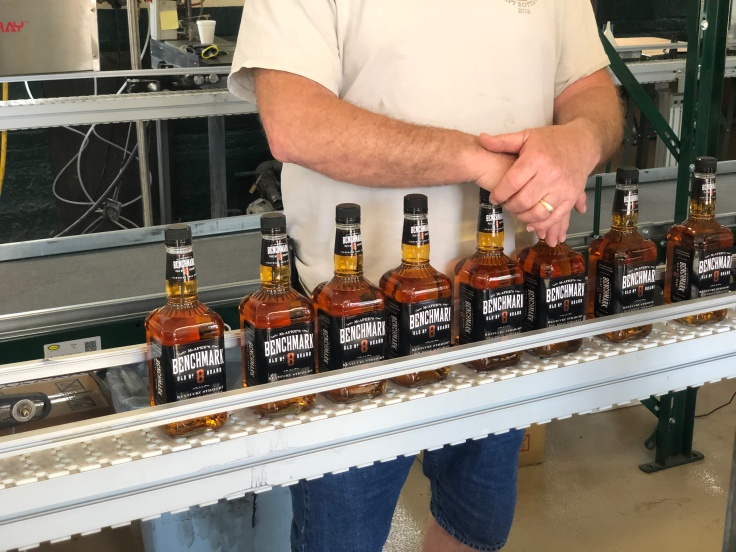

When we toured Maker’s Mark, Jim Beam, Jack Daniel’s, and others, we heard all about the original family’s dedication to making a high quality whiskey (or whisky), how they developed their brand, their distinction in the marketplace, and their unique flavor profile. And, yes, we learned that the family eventually sold out to one of the multinational conglomerates that own the vast majority of makers of wine, beer, and spirits… Here at Buffalo Trace I learned something different.
Buffalo Trace Distillery is a corporate “made up” brand, and is part of a corporate conglomerate that buys up smaller brands and farms out their services and distilleries to brands owned by others. Buffalo Trace is owned by the Sazerac Company, which is privately owned by a billionaire (William Goldring and his family) in New Orleans. The corporate office is in Louisville, Kentucky. As of 2017, it operated nine distilleries, had 2,000 employees, and operated in 112 countries. It is one of the two largest spirits companies in the U.S., with annual revenue of about $1 billion made from selling about 300 mostly discount brands. They claim it is the largest and privately held distillery, but Heaven Hill disputes that point… They also claim it’s the oldest continuously operating distillery, built in 1812. However, Burks’ distillery, now used for production of Maker’s Mark, disputes this. According to its citation in the registry of National Historic Landmarks, Burks’ Distillery’s origins extend to 1805, and Burks’ Distillery is listed in the Guinness Book of World Records as the oldest operating bourbon distillery. So we know that Buffalo Trace claims things that may just be apocryphal…
The distillery has historically been known by several names, including the George T. Stagg Distillery and the Old Fire Copper (O.F.C.) Distillery. The company says the name “Buffalo Trace” refers to an ancient buffalo crossing on the banks of the Kentucky River in Franklin County, Kentucky. The Sazerac Company purchased the distillery in 1992, and Buffalo Trace Kentucky Straight Bourbon Whiskey was “invented” in 1999. So, as you see, Buffalo Trace was no small Mom and Pop brand that did well…
Records indicate that distilling started on the site that is now the Buffalo Trace Distillery in 1775 by Hancock Lee and his brother Willis Lee, who died in 1776. The first distillery was constructed in 1812 by Harrison Blanton. In 1870 the distillery was purchased by Edmund H. Taylor and given its first name, the Old Fire Copper (O.F.C.) Distillery. Taylor sold the distillery eight years later to George T. Stagg along with the Old Oscar Pepper Distillery. This second distillery was sold within the year to James Graham, in order to add more land to the O.F.C. Distillery. In 1886, Stagg installed steam heating in the storage warehouses, the first climate controlled warehouse for aging whiskey in the nation. This is another unique feature of Buffalo Trace… Most other brands brag that their barrel houses are NOT climate controlled… (Except for Woodford Reserve…)
While Buffalo Trace Distillery is mainly known for its bourbon, it also produces other spirits such as rye whiskey and vodka, plus quasi-bourbon such are Bourbon Cream. (More of Bourbon Cream later…).
Buffalo Trace is HUGE! The following spirits are produced by Buffalo Trace Distillery:
- Self-produced brands
- Buffalo Trace – straight bourbon
- Col. E. H. Taylor – small batch, single-barrel, and barrel proof straight bourbon and rye
- Eagle Rare – straight bourbon and 17 year antique collection
- George T. Stagg – barrel-proof straight bourbon
- Stagg Jr.- barrel proof straight bourbon
- McAfee’s Benchmark – straight bourbon
- O.F.C. – straight bourbon (with a prior name for the distillery)
- Old Charter – straight bourbon
- Old Taylor – straight bourbon
- Sazerac – straight rye and Sazerac antique collection
- Thomas H. Handy – barrel-proof straight rye
- W. L. Weller – special reserve, antique 107, and barrel proof William Larue Weller antique collection straight bourbon (with a wheated mash bill very similar or identical to that for the Van Winkle brands)
- Wheatley Vodka
- Brands produced in partnership with Age International (a former owner of the distillery, now part of the Japanese company Takara Holdings):
- Ancient Age – straight bourbon
- Blanton’s single-barrel – straight bourbon
- Hancock’s President’s Reserve – single-barrel straight bourbon
- Elmer T. Lee – single-barrel straight bourbon
- Rock Hill Farms – single-barrel straight bourbon
- Brands produced in partnership with the Van Winkle family (under an agreement established in June 2002):
- Old Rip Van Winkle – straight bourbon (wheated)
- Pappy Van Winkle’s Family Reserve – straight bourbon (wheated)
- Van Winkle Special Reserve – straight bourbon (wheated)
- Van Winkle Family Reserve – straight rye
So, rather than having a great family story, Buffalo Trace is a product of a giant corporate conglomerate. Nothing romantic, no great family story, nothing to write home about. However, it is a VERY good bourbon!
Finally we moved on to the tasting…
We tasted some white lightning and some vodka that they make. Nothing special, although the vodka is rated to be very good and is at a price point far below other premium vodkas…


We tasted Buffalo Trace and Eagle Rare. Same mash bill, but Eagle Rare is a higher proof and it has been aged longer… It was marginally better than Buffalo Trace, which, of course, was quite good.
Then we tasted the bourbon cream. It is a bourbon liqueur, 30 proof; It is made with bourbon and real cream. A special process enables these two dissimilar products to blend nicely without curdling. It was spectacular! (And I don’t like Harvey’s or Bristol Cream…)
Then we added a little root beer to the bourbon cream. Root beer float! Add a little ice cream for a real treat!
And, of course, we were given bourbon balls to enjoy!
So the tasting was fun, but the back story was disappointing…
We returned to the Villa and turned in early. And an enjoyable time was had by all…












